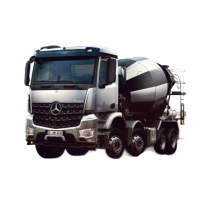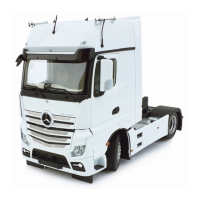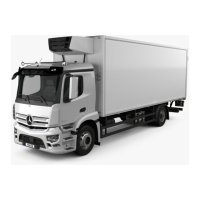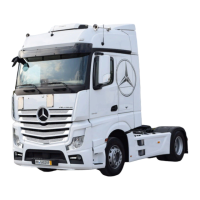Brake system
Description and roadside assistance
83
Guidelines for Breakdown Services (Subject to technical modifications)
i
Releasing the spring-loaded parking brake mechanically
In an emergency, if there is insufficient reservoir pressure in the brake system, the spring-loaded parking brake
can be released mechanically to allow the vehicle to be towed away.
The vehicles can be fitted with the spring-loaded cylinder with release screw, the spring-loaded cylinder with
release indicator or the twin-diaphragm brake cylinder on different axles.
Releasing the spring-loaded parking brake mechanically
왘 Turn the release screws of the spring-loaded cylinders all the way counterclockwise to the release
position
2.
Restoring spring-loaded parking brake to operational state
왘 Fill brake system up to cutoff pressure.
왘 Secure vehicle using wheel chocks to prevent it from rolling.
왘 Move lever of parking brake valve to release position.
왘 Clean and grease release screw before screwing in.
왘 Turn the release screw of the spring-loaded cylinder clockwise into position and screw tight.
Risk of accident G
Before releasing the spring-loaded parking brake, secure the vehicle with wheel chocks to prevent it from
rolling. Attach a clearly visible sign on the mechanically released spring-loaded parking brake in the vehicle
interior. The spring-loaded cylinders of the parking brake must be restored to the operational state before the
vehicle is operated.
Vehicle Front axle Rear axle(s)
4 x 2, 4 x 4 X X —
6 x 2, 6 x 2/4 X —
1 Brake position
2 Release position
!
Maximum release torque 70 Nm. Do not use an impact wrench.

